Huijuan Huang
Easier Painting Than Thinking: Can Text-to-Image Models Set the Stage, but Not Direct the Play?
Sep 03, 2025Abstract:Text-to-image (T2I) generation aims to synthesize images from textual prompts, which jointly specify what must be shown and imply what can be inferred, thereby corresponding to two core capabilities: composition and reasoning. However, with the emerging advances of T2I models in reasoning beyond composition, existing benchmarks reveal clear limitations in providing comprehensive evaluations across and within these capabilities. Meanwhile, these advances also enable models to handle more complex prompts, whereas current benchmarks remain limited to low scene density and simplified one-to-one reasoning. To address these limitations, we propose T2I-CoReBench, a comprehensive and complex benchmark that evaluates both composition and reasoning capabilities of T2I models. To ensure comprehensiveness, we structure composition around scene graph elements (instance, attribute, and relation) and reasoning around the philosophical framework of inference (deductive, inductive, and abductive), formulating a 12-dimensional evaluation taxonomy. To increase complexity, driven by the inherent complexities of real-world scenarios, we curate each prompt with high compositional density for composition and multi-step inference for reasoning. We also pair each prompt with a checklist that specifies individual yes/no questions to assess each intended element independently to facilitate fine-grained and reliable evaluation. In statistics, our benchmark comprises 1,080 challenging prompts and around 13,500 checklist questions. Experiments across 27 current T2I models reveal that their composition capability still remains limited in complex high-density scenarios, while the reasoning capability lags even further behind as a critical bottleneck, with all models struggling to infer implicit elements from prompts. Our project page: https://t2i-corebench.github.io/.
StyleMaster: Stylize Your Video with Artistic Generation and Translation
Dec 10, 2024



Abstract:Style control has been popular in video generation models. Existing methods often generate videos far from the given style, cause content leakage, and struggle to transfer one video to the desired style. Our first observation is that the style extraction stage matters, whereas existing methods emphasize global style but ignore local textures. In order to bring texture features while preventing content leakage, we filter content-related patches while retaining style ones based on prompt-patch similarity; for global style extraction, we generate a paired style dataset through model illusion to facilitate contrastive learning, which greatly enhances the absolute style consistency. Moreover, to fill in the image-to-video gap, we train a lightweight motion adapter on still videos, which implicitly enhances stylization extent, and enables our image-trained model to be seamlessly applied to videos. Benefited from these efforts, our approach, StyleMaster, not only achieves significant improvement in both style resemblance and temporal coherence, but also can easily generalize to video style transfer with a gray tile ControlNet. Extensive experiments and visualizations demonstrate that StyleMaster significantly outperforms competitors, effectively generating high-quality stylized videos that align with textual content and closely resemble the style of reference images. Our project page is at https://zixuan-ye.github.io/stylemaster
Assessing a Single Image in Reference-Guided Image Synthesis
Dec 08, 2021
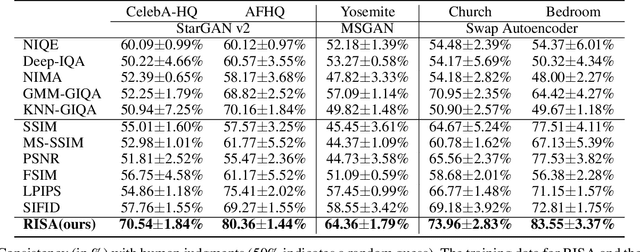
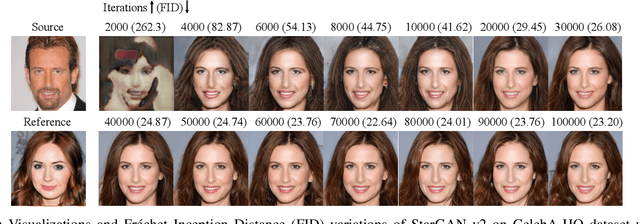

Abstract:Assessing the performance of Generative Adversarial Networks (GANs) has been an important topic due to its practical significance. Although several evaluation metrics have been proposed, they generally assess the quality of the whole generated image distribution. For Reference-guided Image Synthesis (RIS) tasks, i.e., rendering a source image in the style of another reference image, where assessing the quality of a single generated image is crucial, these metrics are not applicable. In this paper, we propose a general learning-based framework, Reference-guided Image Synthesis Assessment (RISA) to quantitatively evaluate the quality of a single generated image. Notably, the training of RISA does not require human annotations. In specific, the training data for RISA are acquired by the intermediate models from the training procedure in RIS, and weakly annotated by the number of models' iterations, based on the positive correlation between image quality and iterations. As this annotation is too coarse as a supervision signal, we introduce two techniques: 1) a pixel-wise interpolation scheme to refine the coarse labels, and 2) multiple binary classifiers to replace a na\"ive regressor. In addition, an unsupervised contrastive loss is introduced to effectively capture the style similarity between a generated image and its reference image. Empirical results on various datasets demonstrate that RISA is highly consistent with human preference and transfers well across models.
Cascade Image Matting with Deformable Graph Refinement
May 08, 2021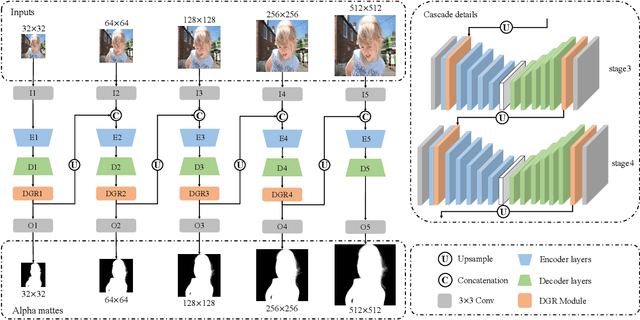



Abstract:Image matting refers to the estimation of the opacity of foreground objects. It requires correct contours and fine details of foreground objects for the matting results. To better accomplish human image matting tasks, we propose the Cascade Image Matting Network with Deformable Graph Refinement, which can automatically predict precise alpha mattes from single human images without any additional inputs. We adopt a network cascade architecture to perform matting from low-to-high resolution, which corresponds to coarse-to-fine optimization. We also introduce the Deformable Graph Refinement (DGR) module based on graph neural networks (GNNs) to overcome the limitations of convolutional neural networks (CNNs). The DGR module can effectively capture long-range relations and obtain more global and local information to help produce finer alpha mattes. We also reduce the computation complexity of the DGR module by dynamically predicting the neighbors and apply DGR module to higher--resolution features. Experimental results demonstrate the ability of our CasDGR to achieve state-of-the-art performance on synthetic datasets and produce good results on real human images.
Frequency Domain Image Translation: More Photo-realistic, Better Identity-preserving
Dec 01, 2020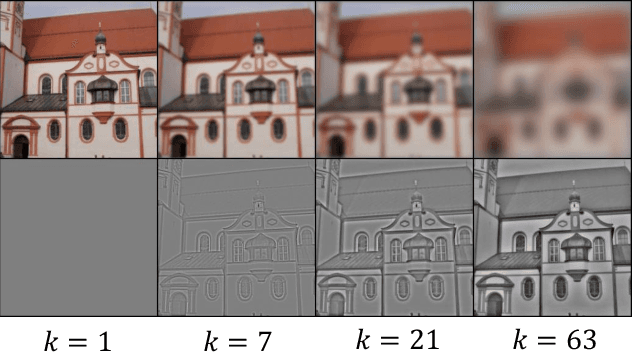
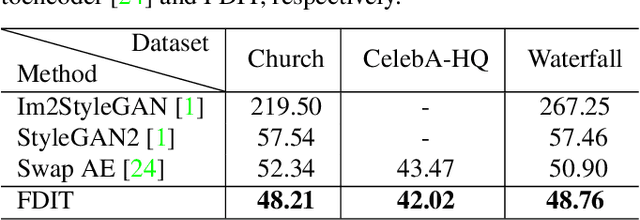
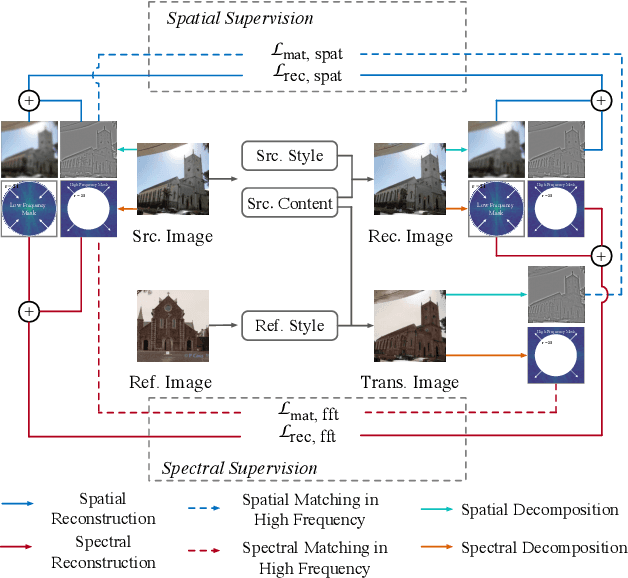
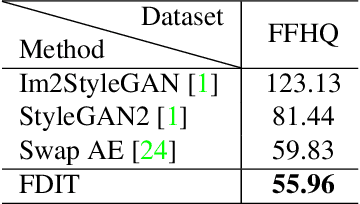
Abstract:Image-to-image translation aims at translating a particular style of an image to another. The synthesized images can be more photo-realistic and identity-preserving by decomposing the image into content and style in a disentangled manner. While existing models focus on designing specialized network architecture to separate the two components, this paper investigates how to explicitly constrain the content and style statistics of images. We achieve this goal by transforming the input image into high frequency and low frequency information, which correspond to the content and style, respectively. We regulate the frequency distribution from two aspects: a) a spatial level restriction to locally restrict the frequency distribution of images; b) a spectral level regulation to enhance the global consistency among images. On multiple datasets we show that the proposed approach consistently leads to significant improvements on top of various state-of-the-art image translation models.
 Add to Chrome
Add to Chrome Add to Firefox
Add to Firefox Add to Edge
Add to Edge